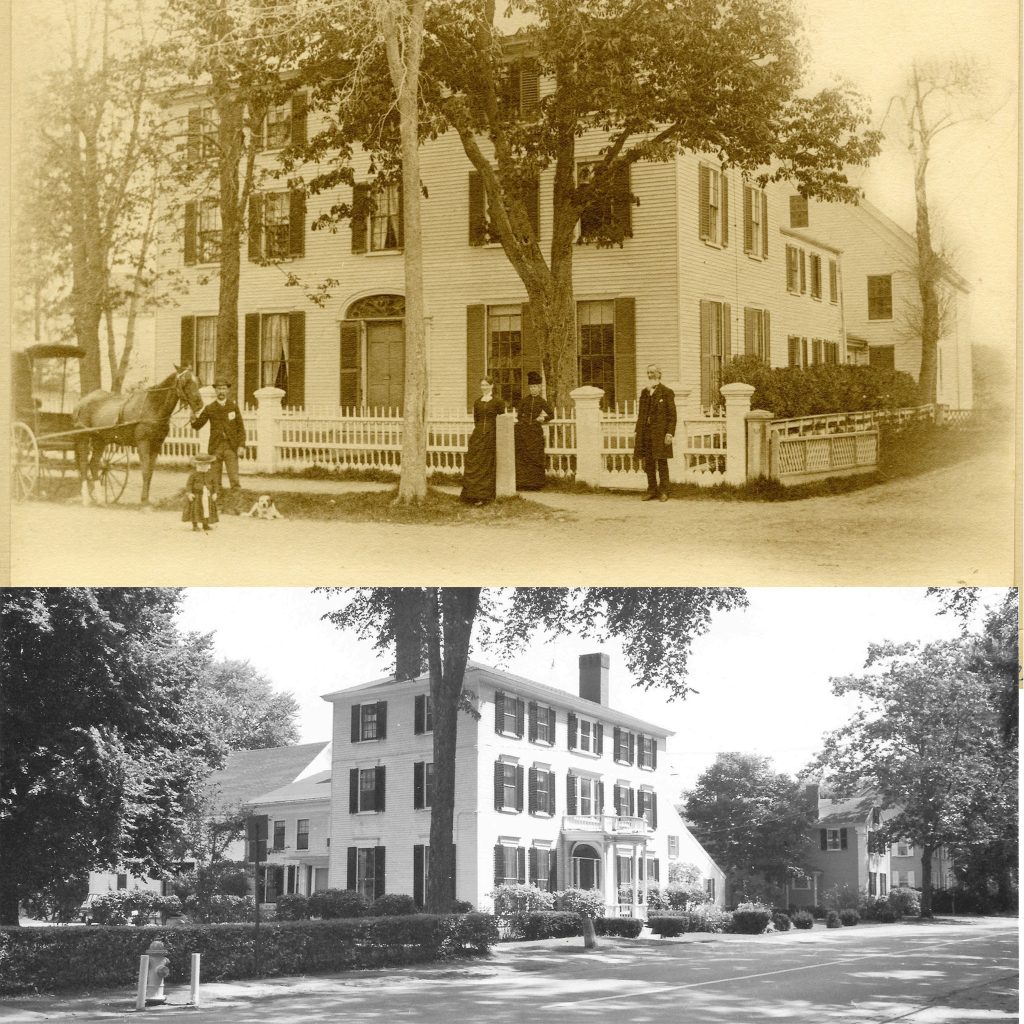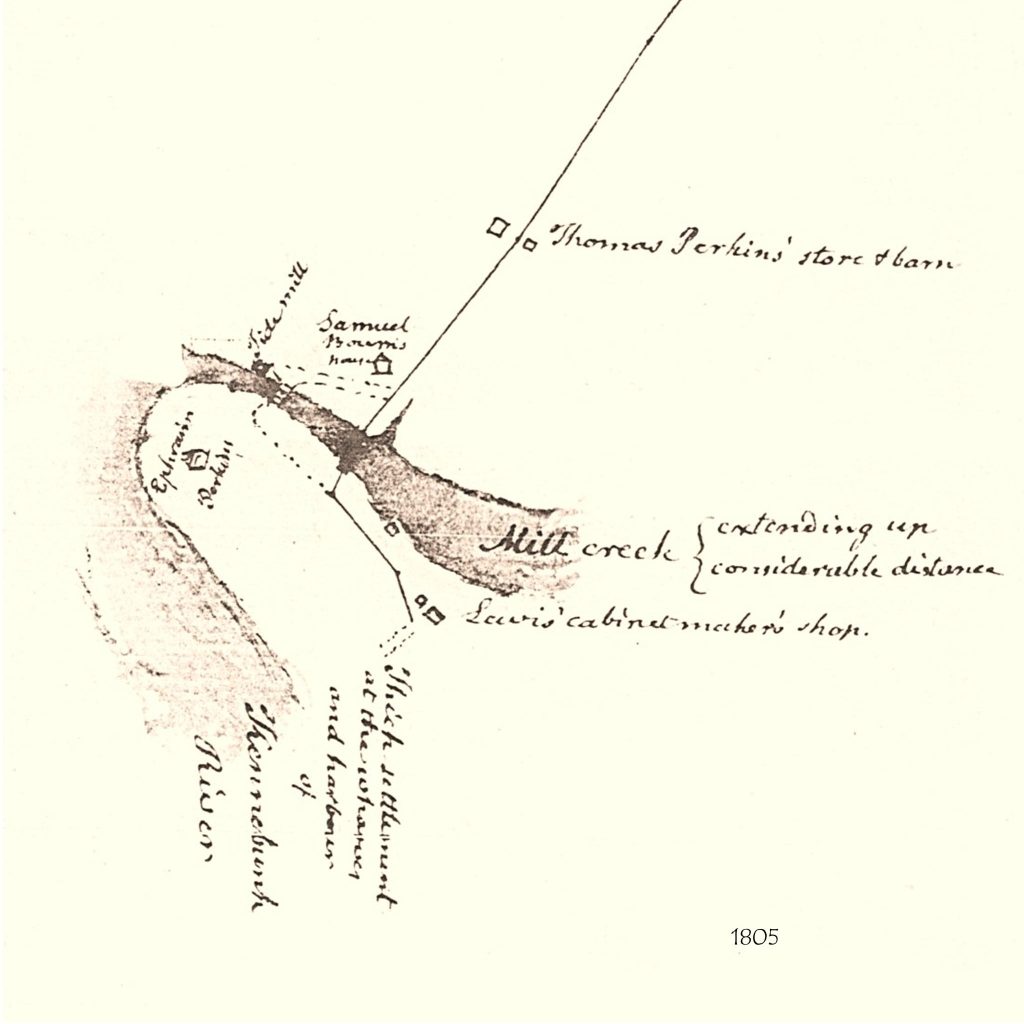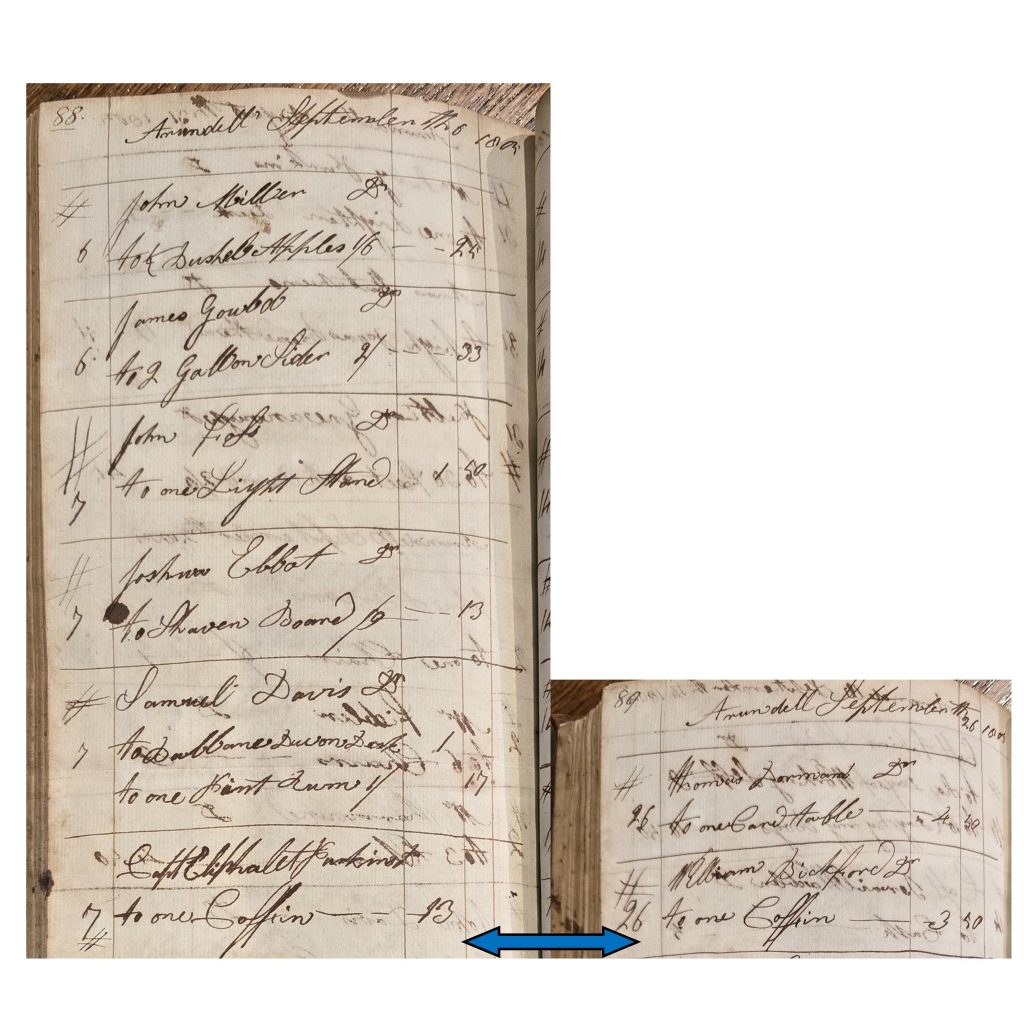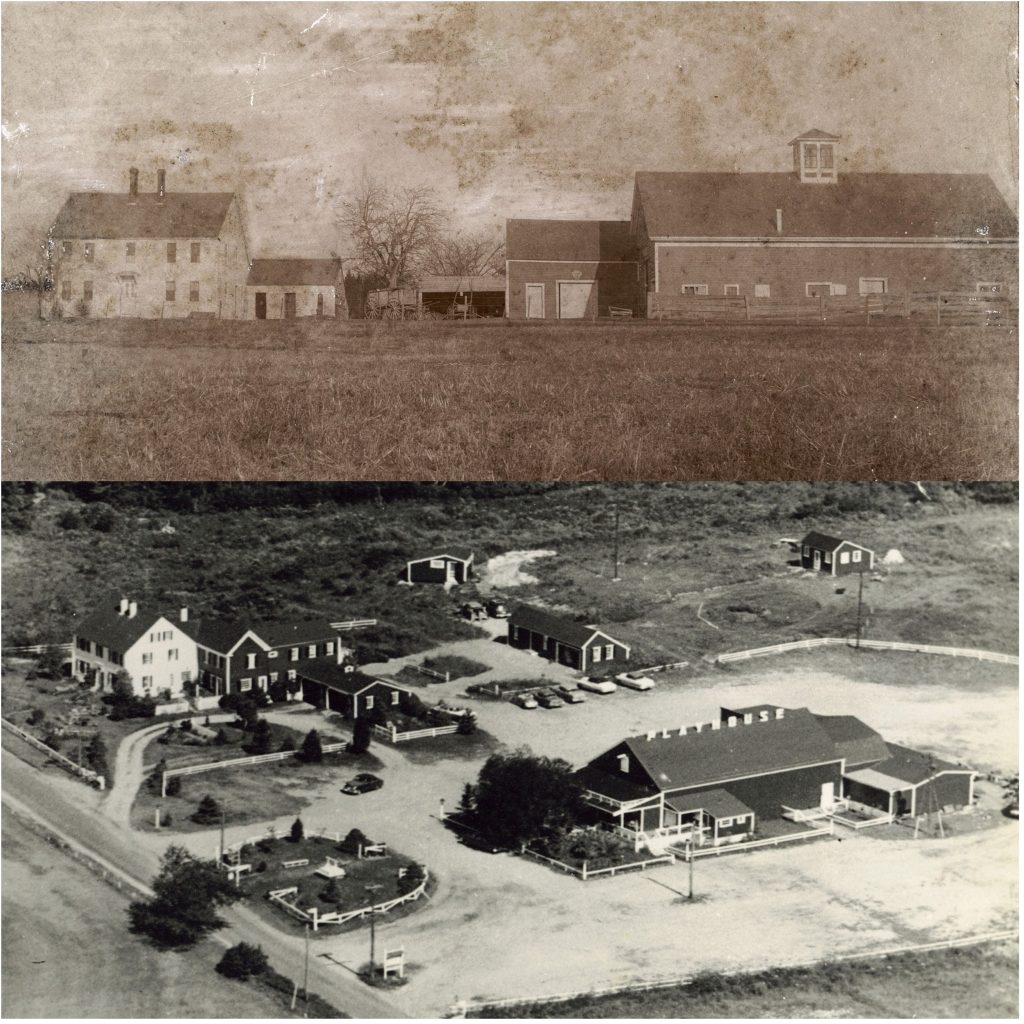Historian’s Halloween
To most historians, the natural world supersedes the “supernatural” in plausibility and interest. That doesn’t mean that historians can’t enjoy Halloween. There is no shortage of ghosts rumored to occupy Kennebunkport’s 18th and 19th Century houses. At least two of those “haunted” houses were also occupied by Samuel Lewis, Jr., the cabinetmaker with one side hustle in ship fitting and another building glass-topped pine coffins for his wealthy deceased neighbors.
The house he built on Maine Street still stands next door to the Nott House. His cabinetmaker’s workshop was already in place in March 1805 when the current Maine Street was realigned. Samuel kept a fascinating daily ledger then, that the Kennebunkport Historical Society holds in its collection. Some coffins cost $1.50 in 1802 while others, built just days earlier for wealthier neighbors, cost $13 to build. I wonder if those were glass-topped.
Samuel built a 2-story front section on the Maine Street house about 1810 around his seemingly unsupported flying staircase that at the time terminated at a skylight on the second floor. It is in honor of his fine workmanship that the house still bears the nickname Samuel’s Stairs.
Samual and his second wife Mary Patten sold half of the house and lot on Maine St to John Somers in 1830 and moved to the Gideon Merrill House on River Road. The barn there would eventually become the first Kennebunkport Playhouse. Owners Robert Currier and his sister Jane Morgan made the “ghosts” that lived there famous on national TV. I had the honor to live in that house one winter when my son and I were first house hunting in the Kennebunks. There were plenty of strange plumbing and electrical malfunctions that turned water and lights on and off erratically, but we both loved the place.
Samuel, Mary and their young son George moved back into half of the Maine St house in 1838. That was probably when Samuel installed hammock rings in his son’s bed chamber. George Lewis perished in 1842 at the age of 15 in the wreck of the Barque Isadore at Cape Neddick. His was one of only 2 bodies recovered from the wreck. It is buried in one of his father’s coffins at The Tombs on North Street.
Samual Lewis eventually bought back the other half of the house in 1850 and built up a third story. He sold the undertaking business to Oliver Huff, proprietor of the meat market in Dock Square and sold the whole house on Maine Street to Enoch Cousens a year before his death in 1857. Andrew Walker wrote in his diary that Samuel Lewis had a few coffins stored in his workshop when he died. He now occupies one of them at The Tombs. Happy Halloween!

“Over the years the Samuel Lewis House has undergone extensive renovations. One owner told of the sheet rocker who was hired to work nights alone on the second floor. One night the worker set up his spotlights and began working when a woman’s shadow appeared on the wall before him. As he watched, the shadow moved slowly across the wall. The worker packed up his tools and left. The following day he returned the house key to the contractor, refused to be paid or to ever return to the house. One summer evening, the concerned owner set a tape recorder in an upstairs room and reported that in addition to the usual night time noises of traffic and the like, the sound of a thump can clearly be heard, much as if a hobbled person was walking through the house. At Prelude an electric candle is placed in each window. After the Christmas season and the owner and family have returned to their winter home, the key holder goes through the house turning off the bulbs in each candle. One evening, when driving by the house, she noticed one of the candles relit. Entering the house, this time she unplugged the candle. Several days later the candle was once again seen shining brightly in the window.”



“Our ghostly visits begin at the Gideon Merrill House on the River Road, once home to Robert Currier, owner of the Kennebunkport Playhouse. It was Currier who, although he claimed never to have seen them, helped name the two resident ghosts Ned and Nellie. According to legend it was Mrs. Kenneth Roberts, Anna, who first called the two apparitions to Currier’s attention. Nellie was often spotted wandering through the house. Those who saw her, and they were many, said she was dressed as either a Quaker or perhaps a Shaker. Some visitors reported that they saw Nellie at their bedside or on the stairway, always clothed in her gray dress with the wide, white collar. One overnight guest told of waking to a white and glowing light in her room and witnessed a lovely lady dressed as a Quaker. A non-believer, who often stayed at the house, explained the sounds as the normal creaks of an old building, birds in the attic and mice in the walls that was UNTIL one evening when she drove up to the unoccupied house and thought she saw a flickering light in the attic as if a candle was burning. Leaving quickly she met her friend in town and together they returned to the house. Entering they found everything in order, except for the candle stub lying on the attic floor.
Currier’s sister, Jane Morgan, has been quoted as saying that she often heard thumping sounds and the opening and closing of doors. And although Nellie seemed, to those who saw her, a quiet and happy apparition Ned appeared to be sad and looking for someone or something. Darryl DiShurley once lived at the house and reported seeing a woman, dressed as a Quaker, looking from an attic window. The woman once joined Darryl in the music room, where she sat quietly in a chair near the door before she disappeared. While sleeping in the front bedroom, one warm summer night, DiShurley was awakened with the feeling of someone entering one bedroom door, circling the bed and leaving by another door. The overwhelming feeling of a presence had invaded the room.
Samuel Lewis, at one time the local coffin builder who specialized in coffins with glass tops, lived in this house until 1838.”



Leave a Reply